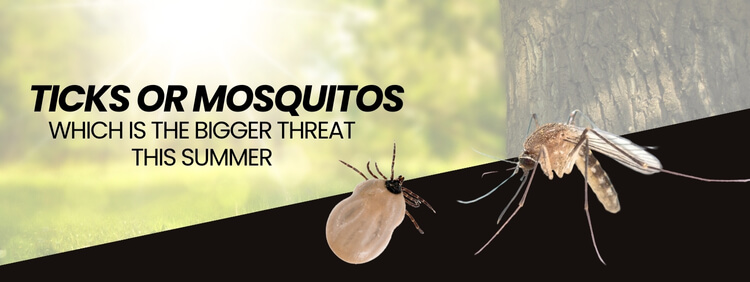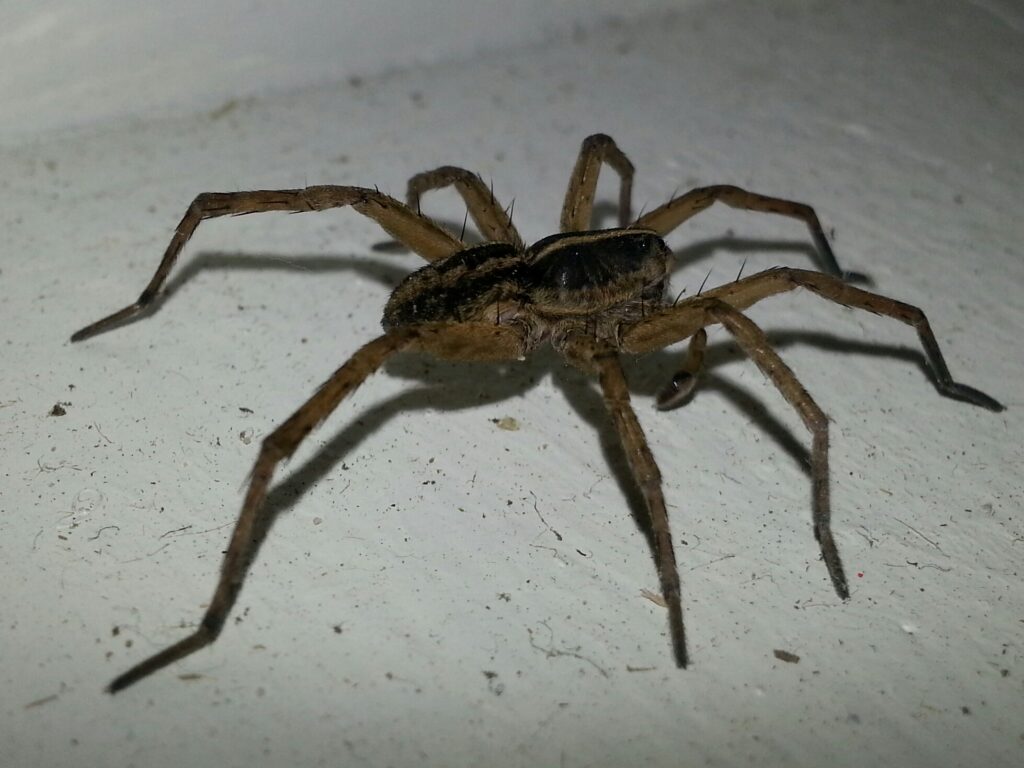 As the summer sun begins to cast its golden glow over Cambridge, outdoor enthusiasts are greeted not only by the warmth of the season but also by the unsettling reality of pests—particularly ticks and mosquitoes. The pressing question on everyone's mind: which of these biting menaces poses the bigger threat?
With a rise in tick populations, the danger of tick-borne diseases becomes a tangible concern. Learning effective tick removal is essential, as is familiarizing yourself with what ticks look like and where they lurk.
Meanwhile, mosquitoes remain a buzz-worthy adversary, swarming backyard barbecues and dusk-time picnics.
To reclaim the joy of summer and ensure public health, pest control in Cambridge is essential, with Truly Nolen leading the charge against these tiny yet formidable foes. Whether they crawl or fly, the battle against these pests is pivotal for a serene season.
As the summer sun begins to cast its golden glow over Cambridge, outdoor enthusiasts are greeted not only by the warmth of the season but also by the unsettling reality of pests—particularly ticks and mosquitoes. The pressing question on everyone's mind: which of these biting menaces poses the bigger threat?
With a rise in tick populations, the danger of tick-borne diseases becomes a tangible concern. Learning effective tick removal is essential, as is familiarizing yourself with what ticks look like and where they lurk.
Meanwhile, mosquitoes remain a buzz-worthy adversary, swarming backyard barbecues and dusk-time picnics.
To reclaim the joy of summer and ensure public health, pest control in Cambridge is essential, with Truly Nolen leading the charge against these tiny yet formidable foes. Whether they crawl or fly, the battle against these pests is pivotal for a serene season.
Health Risks Posed by Ticks: Lyme Disease and Other Illnesses
The risk presented by ticks extends far beyond the initial bite. These small but mighty arachnids often carry harmful pathogens, capable of causing a spectrum of tick-borne diseases in humans. Most notably, Lyme disease is an illness that if left untreated, can spread to joints, the heart, and the nervous system, causing severe health complications. The bacterial infection, transmitted primarily by black-legged ticks, manifests through symptoms such as fatigue, fever, headaches, and skin rash. Over time, these symptoms can evolve into more serious health conditions like neurological disorders and heart disease. Besides Lyme disease, other tick-borne diseases that require attention include the Powassan virus, babesiosis, anaplasmosis, and ehrlichiosis. All these diseases are distinguished by various symptoms but can equally be dangerous to human health if not promptly treated. The risk posed by ticks is heightened in the summer months when they are most active. Awareness and preventive measures can help mitigate the risk of these tick-borne diseases, ultimately ensuring a safe, enjoyable summer season for everyone.Preventive Measures: How to Protect Yourself from Ticks
The key to protecting yourself from ticks lies predominantly in avoiding contact with tick-infested areas and taking precautionary measures when you have to venture into such environments. If you are planning to spend time outdoors, especially in woods or tall, grassy areas, follow the below steps: Wear Protective Clothing:- Long-sleeved shirts and long pants can protect your skin from exposure to ticks.
- Tuck your pants into your socks to create a physical barrier against ticks.
- Light-Coloured clothing makes it easier for you to spot any ticks.
Use Tick Repellents:
Products containing at least 20% DEET (N, N-diethyl-meta-toluamide) or Permethrin can be used to repel ticks. Check for Ticks: After returning from tick-infested areas, it's crucial to check yourself, your children, and your pets for ticks. Additionally, keeping your property tick-free can play a crucial role in minimizing the risk of tick exposure.
Health Risks Posed by Mosquitoes: West Nile Virus and Other Mosquito-Borne Diseases
It's well-documented that mosquitoes can transmit harmful diseases to humans, with West Nile Virus being among the most notable in North America. Typically, symptoms of this virus may range from mild fever and body aches to severe neurological impacts. The magnitude depends on the individual's immune response and, in rare cases, it can lead to death. But the threat from mosquitoes does not end with the West Nile Virus. There are other diseases like Zika, dengue, and yellow fever which mosquitoes can transmit. While these diseases are more prevalent in other parts of the world, increased global travel, climate change, and shifting mosquito populations can contribute to their potential presence here in Canada. Malaria is another mosquito-borne disease which has been largely eliminated in Canada but is still a significant threat in many other parts of the world. Anopheles mosquitoes, that can transmit malaria, are present in certain regions of Canada, indicating that there's a risk, albeit small, of locally acquired cases occurring.Preventive Measures: How to Protect Yourself from Mosquitoes
While it's nearly impossible to completely avoid mosquitoes, there are effective strategies to mitigate your risk of unwanted exposure. Implementing these preventive measures can significantly reduce your chances of contracting mosquito-borne diseases, such as the West Nile virus.- Apply Mosquito Repellents: Make sure to apply a mosquito repellent that contains an active ingredient like DEET or picaridin, as they are generally known to be most effective. Repellents don't kill mosquitoes but rather deter them from landing or biting.
- Wear Protective Clothing: Another effective method is to cover your skin as much as possible. Opt for long-sleeved shirts, long pants, socks, and a wide-brimmed hat when outdoors for prolonged periods during peak mosquito hours - usually dawn and dusk. Light-Coloured clothing can also help, as mosquitoes are generally attracted to dark colours.
- Eliminate Standing Water: Reducing mosquito breeding sites is one of the best ways to control their population. Mosquitoes lay their eggs in stagnant water, even in small amounts. Regularly empty and clean birdbaths, old tires, flowerpot saucers, and any containers that might collect rainwater.
- Mosquito-proof Your Home: Lastly, ensure your home is less hospitable to mosquitoes. Keep doors and windows shut or make sure they're fitted with screens to prevent mosquitoes from entering. Check the screens regularly for holes where mosquitoes could potentially get in.

